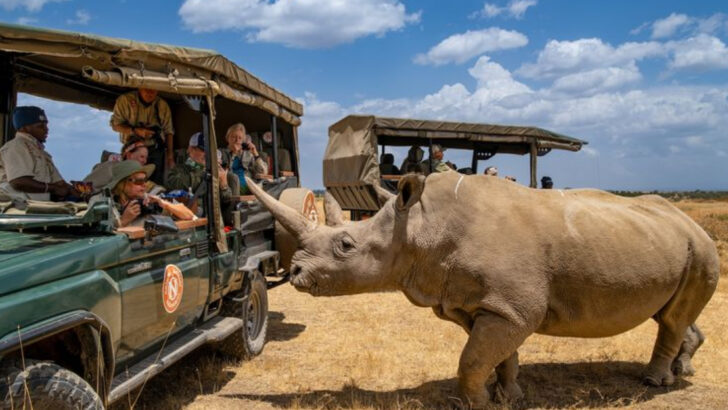Everyone wants to see the lion—until a honey badger steals the show. The Big Five get all the headlines. Cameras click. Binoculars lock in. But for every leopard lounging on a branch, there’s a quirky underdog nearby winning hearts in silence. From towering elephants to lightning-fast cheetahs, the classic safari stars live up to the hype. Still, if you keep your eyes (and curiosity) open, you’ll find hidden gems—animals that aren’t in the brochures, but totally deserve the spotlight. Some are goofy. Some are fierce. And some are just plain weird—in the best possible way. Let’s meet the famous 10 everyone’s chasing… and the 6 lesser-known wild wonders that sneak into your memories and never leave.
African Elephant
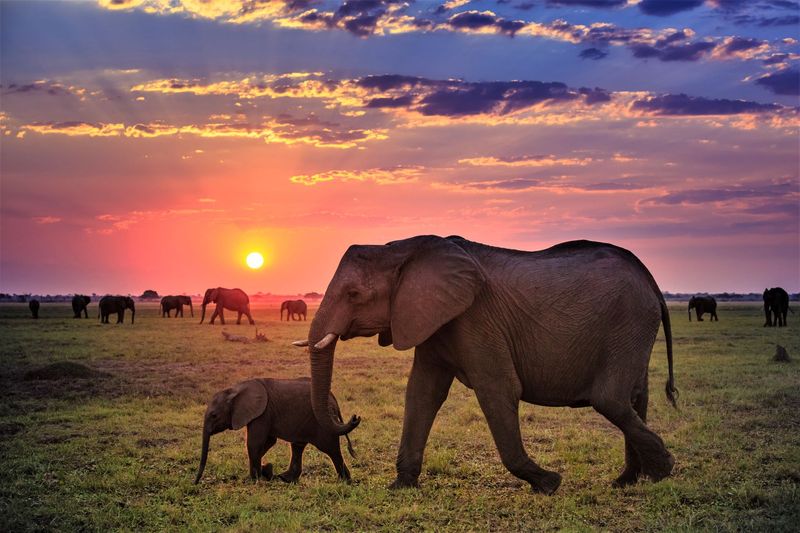
The African elephant, with its massive, majestic presence, is a sight to behold on any safari. Known for their intelligence and strong family bonds, these gentle giants roam the savannah in matriarchal herds. Catching a glimpse of their playful calves is a joy for any wildlife enthusiast.
Their large, flapping ears help regulate body temperature, while their trunks are both powerful and dexterous. Observing these creatures in the wild offers insights into their complex social structures and behaviors.
Did you know? Elephants can communicate through low-frequency sounds that travel over long distances.
Lion
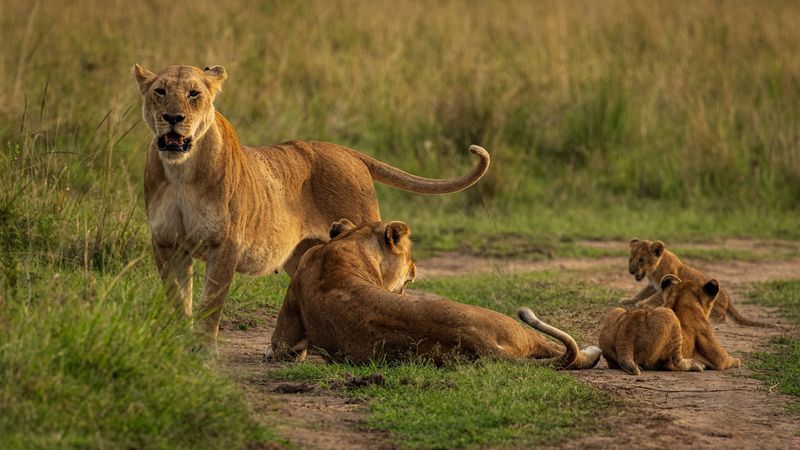
With a mane befitting a king, the lion reigns supreme over the savannah. Recognized for their commanding presence and social pride dynamics, lions are often at the top of every safari checklist. Hearing their mighty roar echo across the landscape is a spine-tingling experience.
Lions spend a lot of time resting, conserving energy for nighttime when they hunt under the cover of darkness. Their social structure revolves around prides, groups consisting of females, their cubs, and a few males.
Fun fact: A lion’s roar can be heard up to five miles away.
Leopard
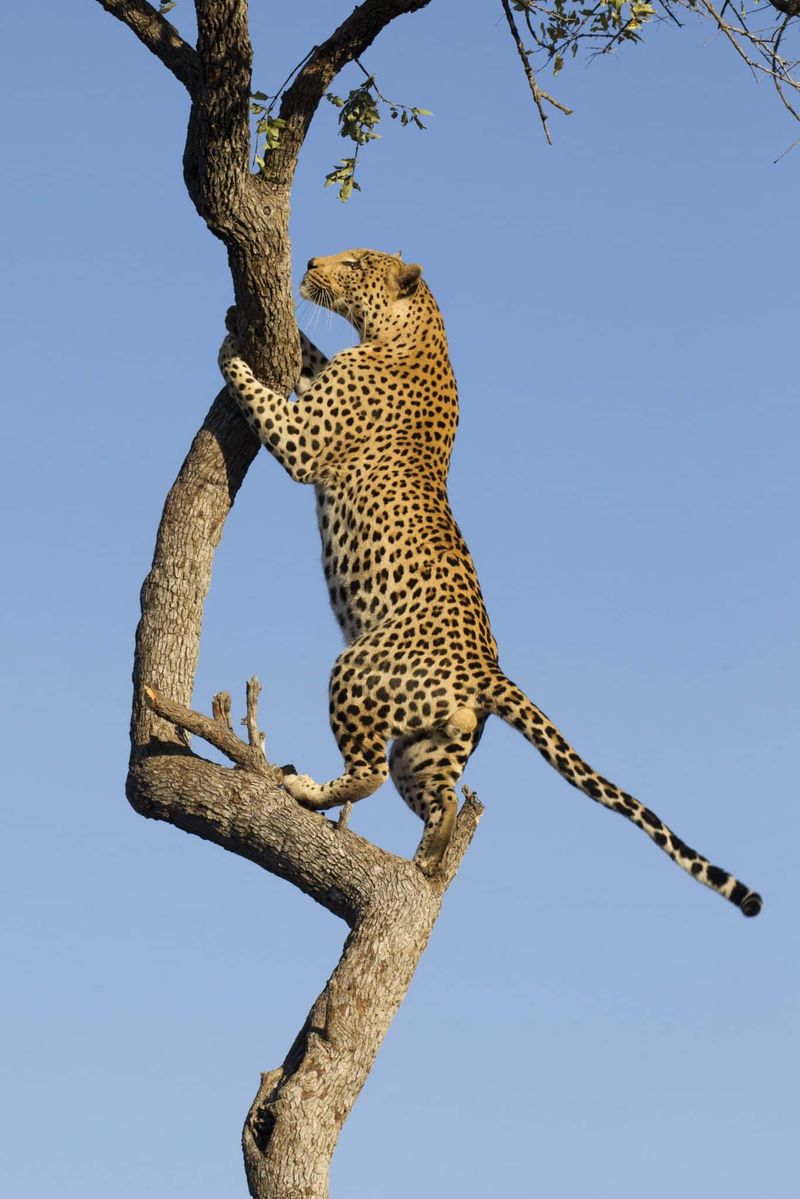
Elusive and enigmatic, the leopard is a master of disguise. Their spotted coats allow them to blend into the dappled light of the bush, making them excellent hunters. Watching a leopard stealthily moving through its environment is a thrilling experience.
Leopards are solitary creatures, often seen resting on tree branches during the day. Their strength is unmatched, capable of dragging prey twice their size up into the trees.
Interesting tidbit: Leopards can carry prey as heavy as themselves up a tree, showcasing their incredible power and agility.
Rhinoceros
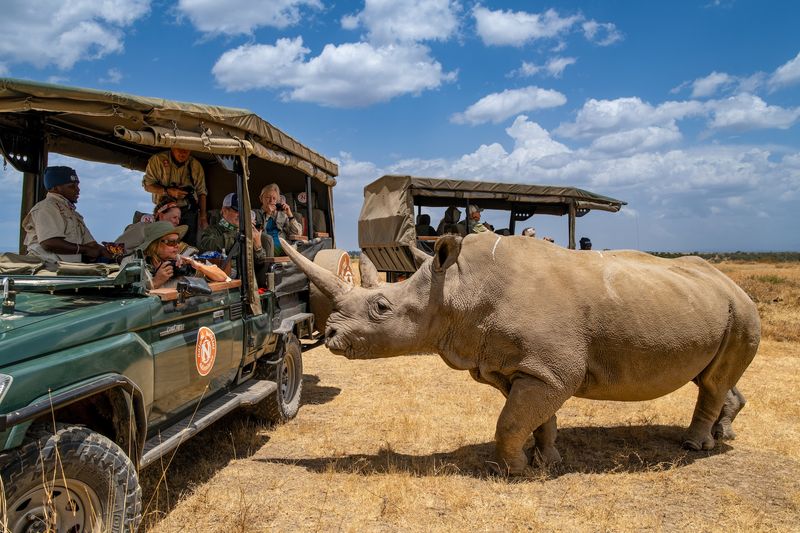
The rhinoceros, with its formidable horn and thick skin, is a symbol of strength and resilience. These creatures are critically endangered, making each sighting on safari a treasured moment. Their presence in conservation areas highlights efforts to protect them from poaching.
Rhinos are often seen grazing in open fields, moving with surprising grace despite their bulk. Their horns, made of keratin, grow continuously throughout their lives.
Conservation fact: Efforts to protect rhinos include dehorning and increased anti-poaching patrols, crucial for their survival.
Cape Buffalo
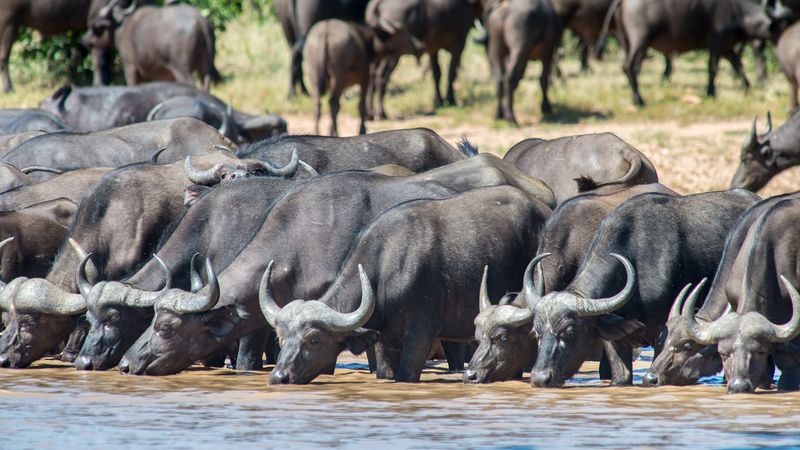
Cape buffaloes, with their imposing horns and solid build, are one of the most dangerous game animals. They are known for their unpredictable nature and herding in large groups, providing a fascinating display of social behavior in the wild.
These animals gather around water sources, offering excellent viewing opportunities for safari-goers. Despite their bulk, they can run at impressive speeds when threatened.
Did you know? Cape buffaloes have a strong herd mentality, often defending their members against predators with coordinated group efforts.
Giraffe
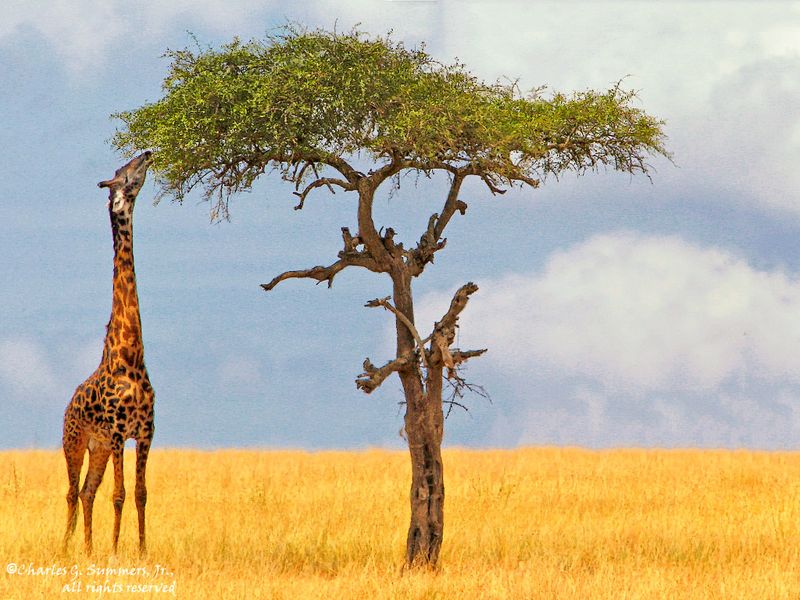
With its towering height and gentle demeanor, the giraffe is an iconic symbol of the African landscape. Their long necks allow them to reach the highest leaves of the acacia trees, making for a captivating sight.
Giraffes are known for their unique patterns, no two are alike, offering a form of camouflage among the trees. Observing them move gracefully despite their height is truly mesmerizing.
Fun fact: Giraffes have the same number of neck vertebrae as humans, just greatly elongated!
Zebra
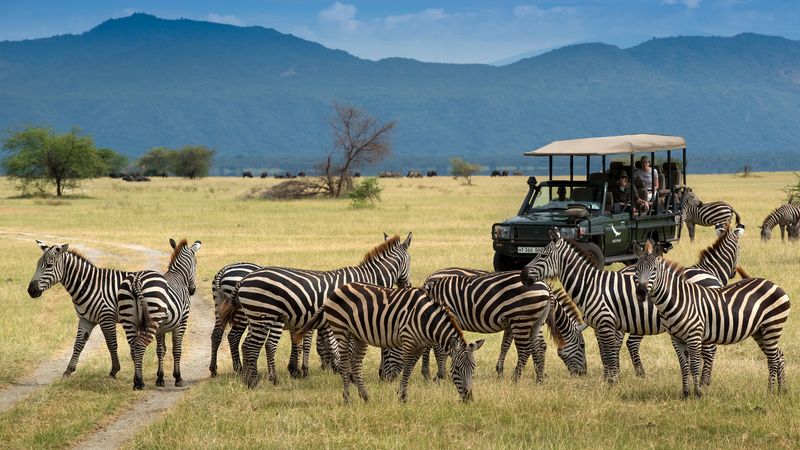
Zebras, with their striking black and white stripes, create a stunning visual against the backdrop of the African plains. Each stripe pattern is unique, much like a human fingerprint.
These social animals graze in large herds, often mingling with other species like wildebeests. Their stripes serve as a form of camouflage, confusing predators when in motion.
Interesting fact: Theories suggest that zebra stripes help deter biting flies by disrupting their visual pattern recognition.
Cheetah
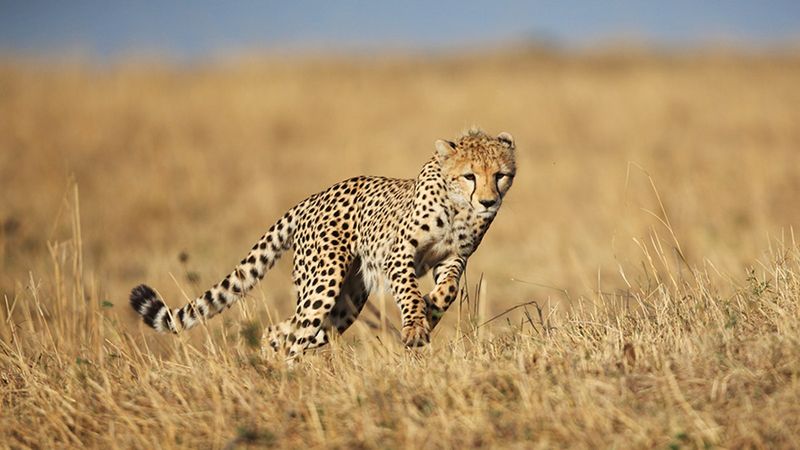
Renowned as the fastest land animal, the cheetah’s sleek build and incredible speed make it a marvel to watch. On a safari, witnessing a cheetah chase is an exhilarating sight.
Cheetahs are built for speed, with long legs and a lightweight frame. Unlike other big cats, they hunt during the day, relying on their keen eyesight to spot prey from a distance.
Did you know? Cheetahs have distinctive black “tear marks” under their eyes to reduce glare and enhance focus during high-speed chases.
Hippopotamus
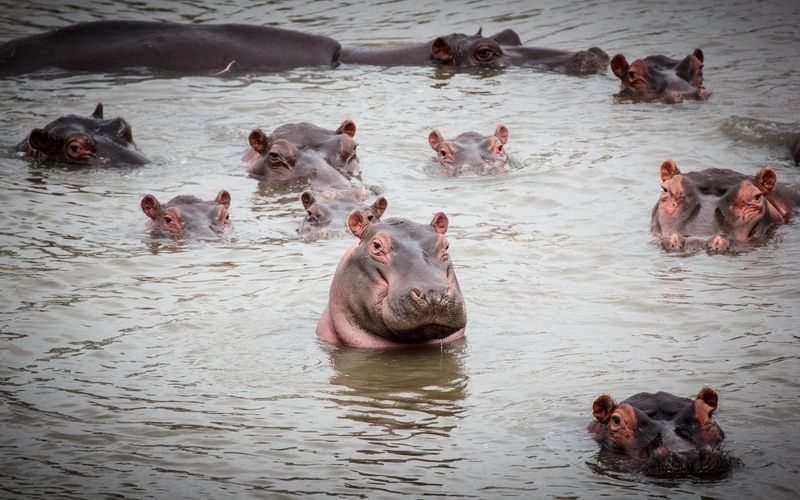
The hippopotamus, often seen wallowing in rivers, is one of Africa’s most dangerous animals despite its seemingly docile appearance. Their large mouths and sharp teeth make them formidable, especially when defending their territory.
Hippos spend much of their day submerged in water to keep cool, emerging at dusk to graze on land. Their social structure revolves around pods, often numbering several individuals.
Trivia: Despite their size, hippos can run surprisingly fast on land, making them a challenging subject for photographers.
Wildebeest
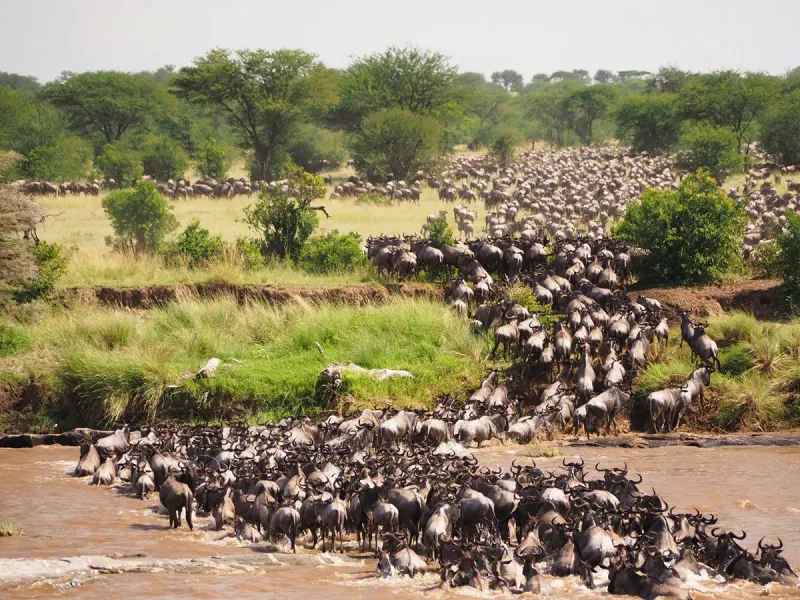
The wildebeest migration is one of nature’s grandest spectacles. These animals move in vast herds across the plains, following seasonal rains in a continual search for fresh grazing.
Witnessing this migration on safari is an awe-inspiring experience, as wildebeests face numerous challenges, including river crossings teeming with crocodiles.
Did you know? The Great Migration involves over 1.5 million wildebeests alongside zebras and other antelopes, creating a moving buffet for predators.
Serval
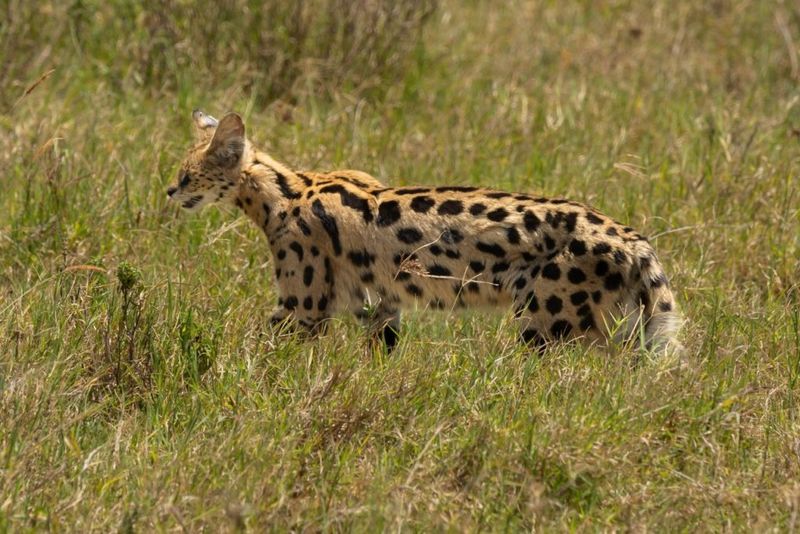
The serval, with its long legs and large ears, is a lesser-known gem of the savannah. Expert hunters, they are often seen in grasslands where their camouflaging fur blends perfectly with the surroundings.
Unlike larger cats, servals rely on their acute sense of hearing to locate prey, making them fascinating to observe. Their leaping abilities enable them to catch birds mid-flight.
Fun fact: Servals have the longest legs relative to body size among cats, giving them an advantage in tall grass habitats.
African Wild Dog
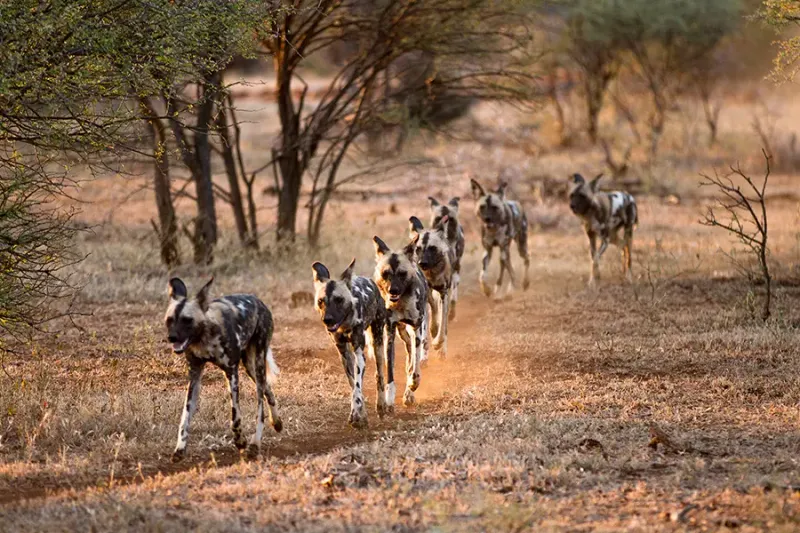
African wild dogs, with their mottled coats and expressive ears, are social animals known for their strong pack bonds. Observing their interactions offers insights into cooperative hunting strategies.
These endangered predators are skilled hunters with a high success rate, often chasing prey for long distances. Their pack structure is led by a dominant breeding pair.
Wild fact: Each dog has a unique coat pattern, helping them identify one another within the pack, crucial for maintaining social bonds.
Hyena
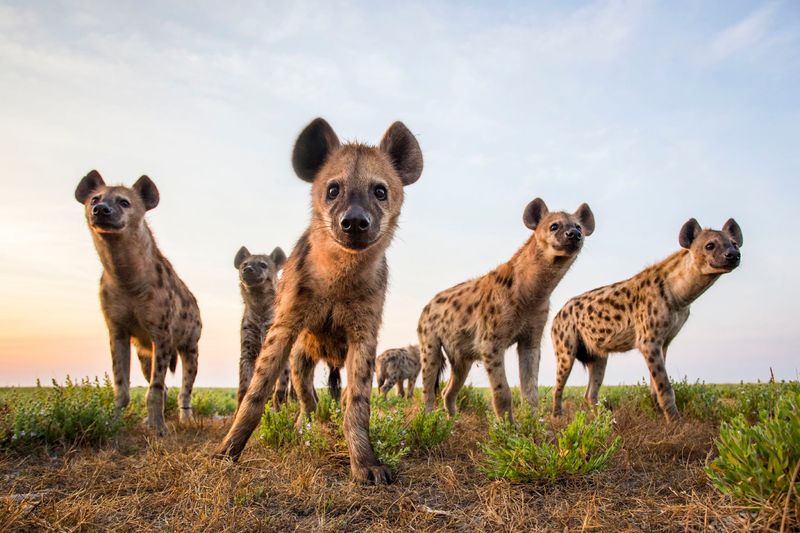
Often misunderstood, hyenas are intelligent and resourceful creatures with complex social structures. Known for their distinctive calls, hyenas play an essential role in the ecosystem as scavengers.
They are skilled hunters, often working in groups to take down large prey. Hyenas’ strong jaws can crush bones, allowing them to consume nearly every part of a carcass.
Did you know? Hyenas have a matriarchal society, with females typically leading the clans and being larger than males.
Bateleur Eagle
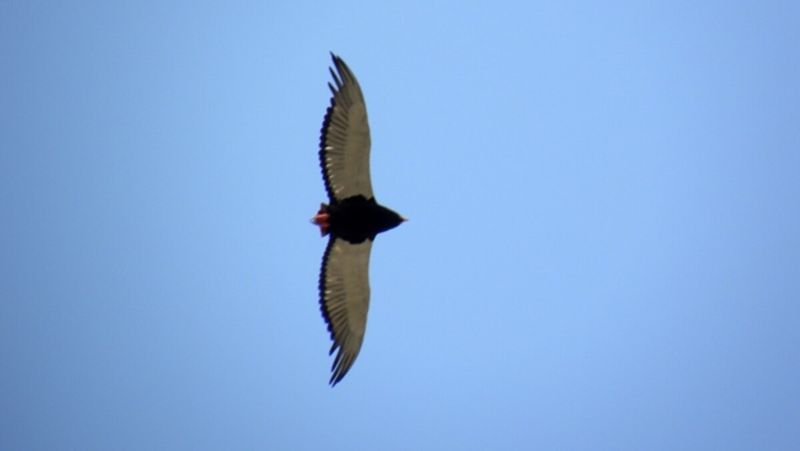
The Bateleur eagle, with its striking appearance and acrobatic flight, is a raptor of the open savannah. Known for its vivid colors and short tail, this bird is a favorite among birdwatchers.
Bateleurs can be seen gliding gracefully, often covering vast distances in search of food on the wing. Their presence is a testament to the rich avian diversity of the African wilderness.
Interesting tidbit: The name “Bateleur” means “tightrope walker” in French, reflecting their agile flight patterns.
Meerkat
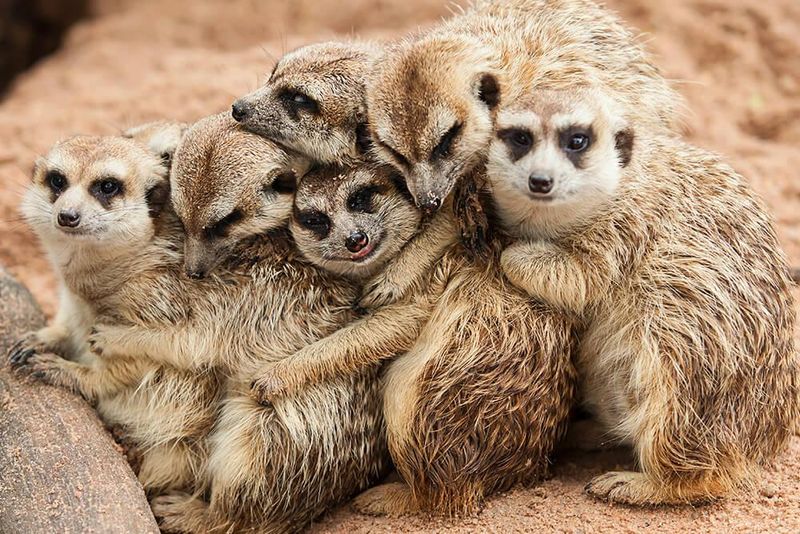
Meerkats, with their curious nature and upright stance, have charmed many with their social behavior. Living in large groups called mobs, they maintain a vigilant watch for predators.
Their burrows provide safety, while their cooperative nature ensures the group’s survival. Observing meerkats interact is a delightful experience, showcasing their playful yet cautious demeanor.
Fun fact: Meerkats have a specialized membrane that protects their eyes from the harsh desert sun, a handy adaptation for life in arid environments.
Honey Badger
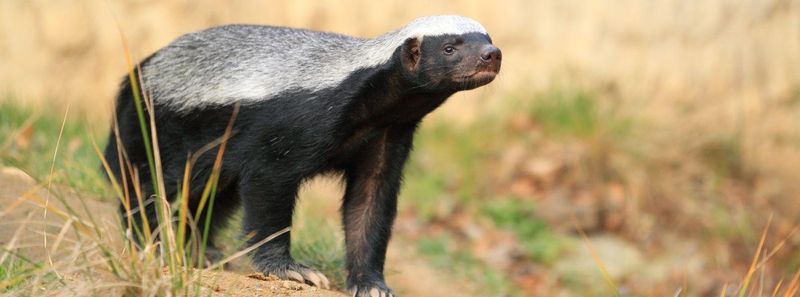
The honey badger, despite its size, is renowned for its fearless and tenacious nature. Known to take on much larger predators, they embody courage and determination.
These solitary animals have a diverse diet, often digging for honeycombs, hence their name. Their thick skin offers protection against bites and stings.
Did you know? Honey badgers have been known to chase away lions and hyenas, earning them a reputation as one of the most fearless animals in the wild.

